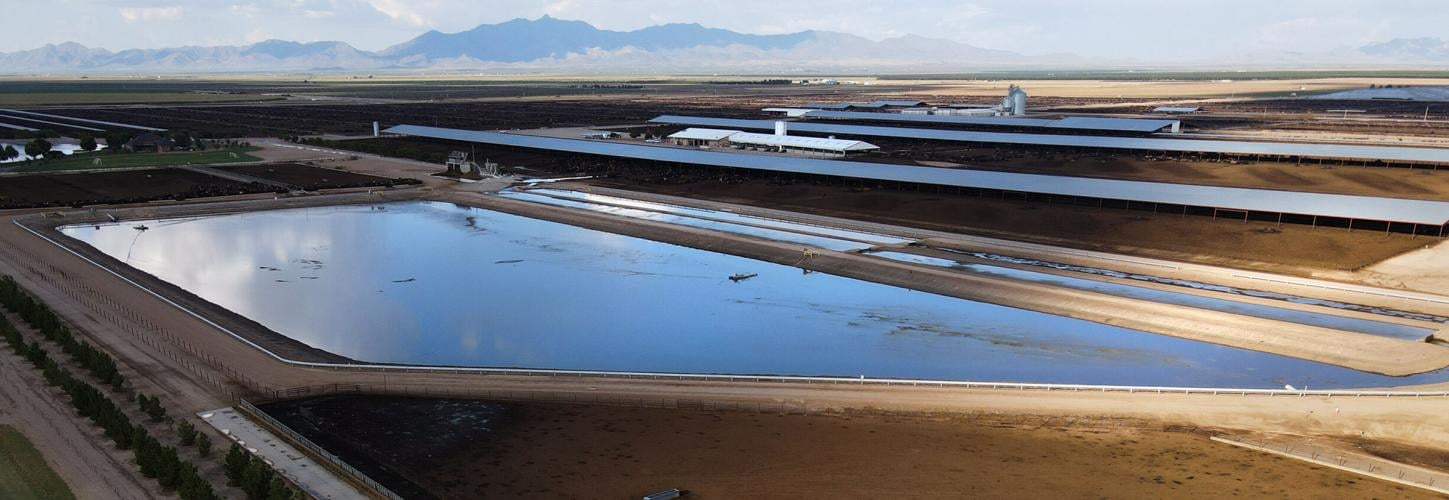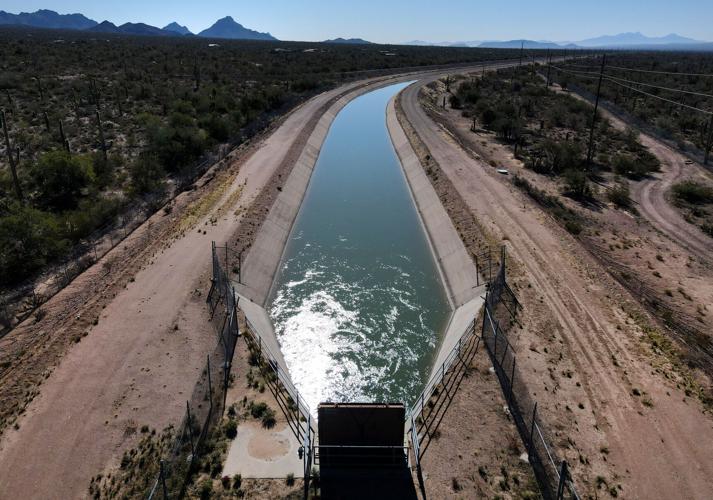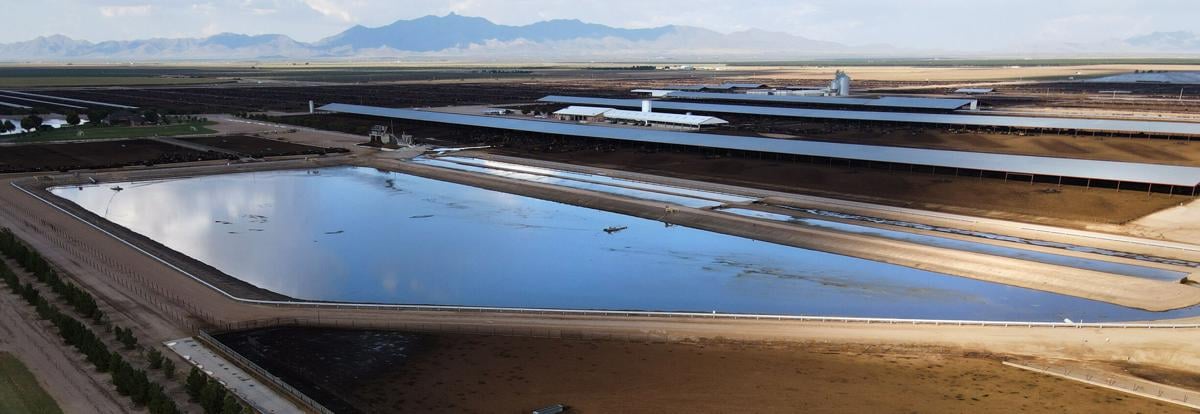PHOENIX — Gov. Doug Ducey and Arizona lawmakers appear finally ready to act on a more permanent solution to the fact that it’s hotter and drier — and there just isn’t enough water to sustain the state’s growth.
And that could involve not only the state spending far more money than it has before but some creative solutions, ranging from piping and treating salt water from the Sea of Cortez to what is commonly known as “toilet to tap.’’
The consensus comes as prior efforts to stabilize Arizona’s water supply have come up short.
By a lot.
Facing a diminished supply of Colorado River water, lawmakers in 2019 adopted a “drought contingency plan.’’ It required Arizona and other states in the lower Colorado River basin to reduce the amount of water being taken from the river in an attempt to restore the level of Lake Mead to 1,090 feet.
Even Ducey conceded at the time that was just a temporary solution, designed to preclude further cuts until 2026, by which time there would be new plans.
As of this past week, however, the lake had dropped to less than 1,070 feet. That’s less than 200 feet above “dead pool,’’ the point at which no water would pass through Hoover Dam, cutting off not just that supply but also the electricity the dam generates.
In the interim, Arizona has enacted some other short-term fixes, such as buying — or, more to the point, renting — the river allocations that belong to Arizona tribes, convincing them not to use their Colorado River allocations to keep Lake Mead from dropping any further. That included a $30 million infusion this past October, on top of $40 million already provided to the Department of Water Resources for the same purpose.
But as hot temperatures and dry conditions continue, further action will be necessary.
“You can expect some big things on water,’’ Ducey told Capitol Media Services.
He said details will have to wait until Monday’s State of the State speech. But House Speaker Rusty Bowers, R-Mesa, said he envisions something more than the stop-gap measures of the past.
“Water is the determiner of growth in Arizona,’’ he said.
At the very least, what a new supply would do, said Bowers, is protect rural Arizona.
He noted that some urban communities are looking around for water supplies elsewhere as they seek to continue to grow.
“I don’t want to empty every aquifer in Arizona to build the central three counties and then not have anything,’’ Bowers said. More to the point, the House speaker said the state needs a really long-term solution.
“I’m looking at more than 100 years,’’ he said. And that means tapping a source that is going to be around — and available — for that long.
“The biggest body of water, while it is controlled by Mother Nature, at least it’s a slower impact, is the ocean,’’ Bowers said. “And so desalinization is a huge part of our future.’’
It’s also an expensive part.
Tom Buschatzke, head of the Department of Water Resources, has said the price tag could be perhaps $2,500 an acre-foot, about 0.7 cents per gallon. And even if the political issues of international water transfer could be resolved, he said that kind of project is seven to 10 years away.

The Central Arizona Project canal near Sandario Road and Mile Wide Road northwest of Tucson. The Legislature is expected to address the state's water problem at this year's session, which begins Monday, Jan. 10.
Bowers said he is prepared to introduce legislation to allocate “a substantive amount of money.’’
How much?
“Much bigger than anything I’ve ever asked for,’’ he said, declining right now to put a dollar figure on it.
One factor that cannot be ignored is that agriculture uses 75% of all the water in the state.
Senate President Karen Fann, R-Prescott, said she doesn’t want to impair the industry. But she said there needs to be a recognition that may not be sustainable.
A starting point, said Fann, are the current practices of flood irrigation: opening up a canal gate and letting the water run onto the property. That, she said, no longer makes sense.
So she wants to take a look at using some of the state’s surplus to provide grants to farmers to convert to drip irrigation. Fann said test projects on two 500-acre parcels show that water use can be cut by 25% without harming crops.
“We could take some one-time money to help some of our agricultural people convert over into more drip irrigation instead of the flood irrigation; that, in itself, could make a huge difference in the entire overall picture,’’ she said.
There are more radical solutions, all of which also involve money.
Fann said the state could buy up water rights “so we could put a plug in the dam, so to speak.’’
That leads to the other key option: If there isn’t a new supply and if conservation efforts don’t work, then it comes down to better using — and, more to the point, re-using — what the state already has.
Put another way, today’s sewage becomes tomorrow’s drinking water.
Buschatzke acknowledged the “ick factor’’ that may conjure up. So it comes down to rebranding.
“We don’t call it ‘toilet to tap,’” he said. “We call it ‘direct potable reuse.’”
Bowers said it comes down to convincing people that this is not something unusual.
“We do it now,’’ he said.
“We stick toilet water, A-plus water, in the ground at Granite Reef Underground Storage Project and pull it out in Tempe,’’ Bowers said. “I mean, it’s the same water.’’
What happens in between, he said, is a chemical and physical reaction.
“There’s stuff in the ground that eats bad stuff,’’ Bowers said. And he said it’s no different whether you use a natural filter like the earth or one that’s made by humans.
In fact, he noted, it’s how the astronauts keep their water supply.
Buschatzke said the state already is pursuing that toilet-to-tap, or whatever you want to call it, though very indirectly.
He said there is a plan for Arizona and Nevada to pay California to start using its own sewage, now dumped into the Pacific Ocean, for drinking water. In turn, California would leave more of its allocation in the Colorado River, helping to stabilize the level of Lake Mead.
There are other water-related issues for lawmakers to consider, like forcing those in rural areas to actually monitor and report how much they are pumping out of the ground.
That, in turn, leads to another controversial issue: Out-of-state and foreign interests effectively exporting Arizona water. That most visibly has taken the form of a Saudi Arabian dairy buying a farm and pumping water to grow alfalfa which is then exported to feed cows in that country.
But Bowers said it would be wrong to think of that as somehow stealing Arizona’s water. He said it’s no different than farmers here growing cotton to be exported to the rest of the country. Or, looking at it another way, Arizonans eating tomatoes that were grown with water from Mexico.






